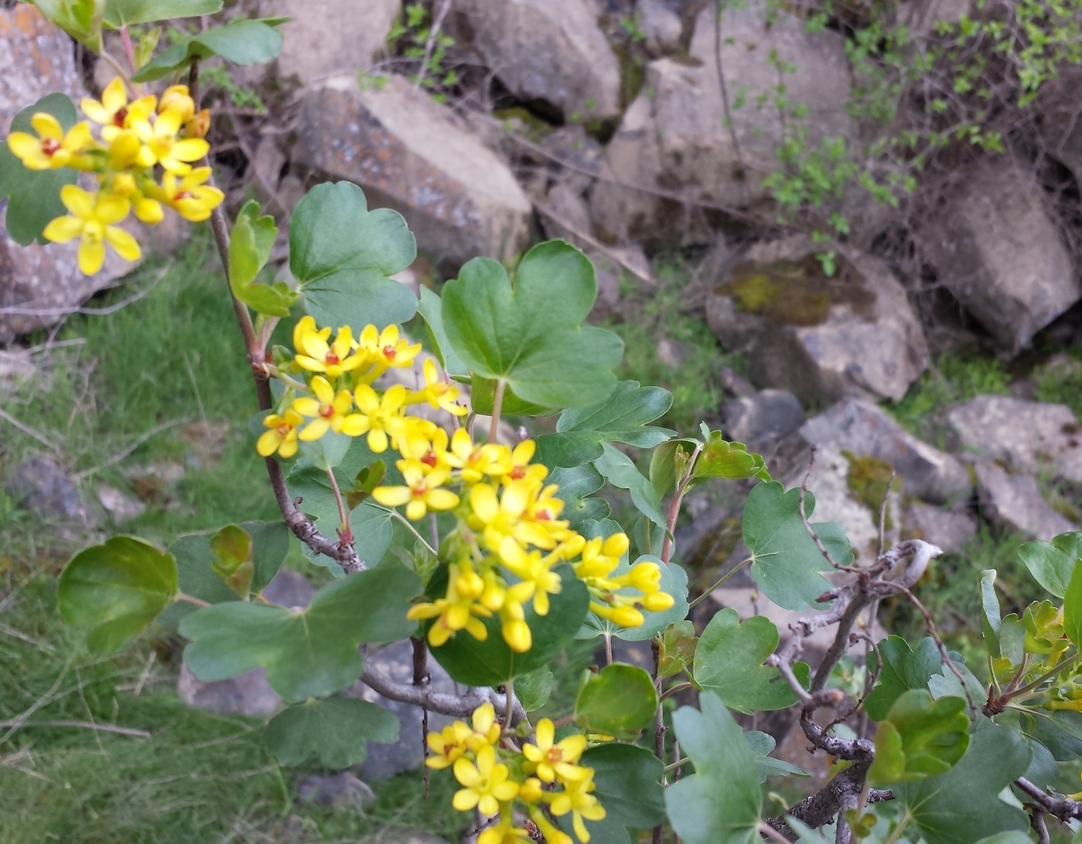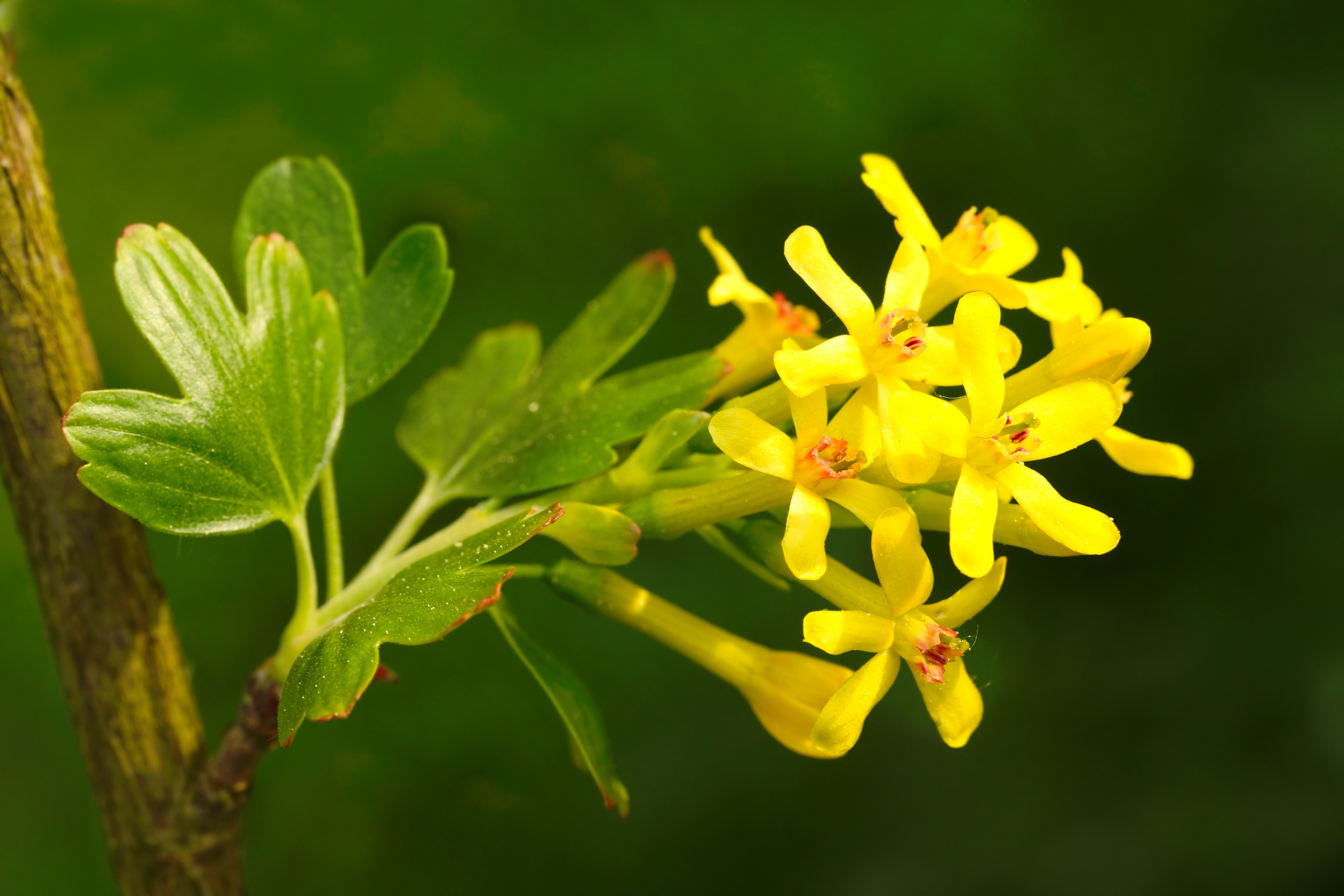Ribes aureum (Golden currant)
Also called Buffalo currant. Deciduous root-spreading shrub up to 10 ft. tall with globe-like berries and showy yellow trumpet shaped flowers with reddish-tinged centers, blooming February to August. Widely adapted, occurring on fine to sandy well-drained loam soils of cliffs, mountain slopes, ravines, floodplains, streamsides, washes and near springs in grasslands, coniferous forests, woodlands, mountain shrub and riparian communities, though drought tolerant; up to 9,000 ft. elevation. Broad distribution but rarely abundant. Often found with willows and Wood’s rose (Rosa woodsii). Good for restoration of rangelands and able to grow on some mine tailings. Cultivated as a landscaping ornamental. Rhizomes sprout after disturbance and fire. Provides cover and forage is browsed by wildlife. Fruits are an important food for numerous birds and small mammals. Flowers attract hummingbirds, bumble bees, butterflies and the Clark’s sphinx hawkmoth.
DISTRIBUTION / ADAPTATION
INFORMATION & ATTRIBUTES
Family: Grossulariaceae
Duration: Perennial
Growth Habit: Shrub
Native Status: Native
Growth Form: Rhizomatous
Mature Height: 10 ft.
Bloom Color: Yellow
Fruit/Seed Color: Red
Bloom Period: Mid spring
Annual Precipitation: 12-20 in.
Drought Tolerance: Medium
Shade Tolerance: Intermediate
Elevation: 3,500-8,000 ft.
Fire Resistance: No
Fire Tolerance: Medium
Nitrogen Fixation: None
SOIL ADAPTATION
Coarse Texture: No
Medium Texture: Yes
Fine Texture: No
Salinity Tolerance: None
CaCO3 Tolerance: High
pH Range: 6.0-8.0
SEEDING NOTES
Seeds per Pound: 268,500
Seeding Rate: PLS lbs/acre
Season: Fall
Days to Germination:
VARIETIES & LOCAL ACCESSIONS
None




